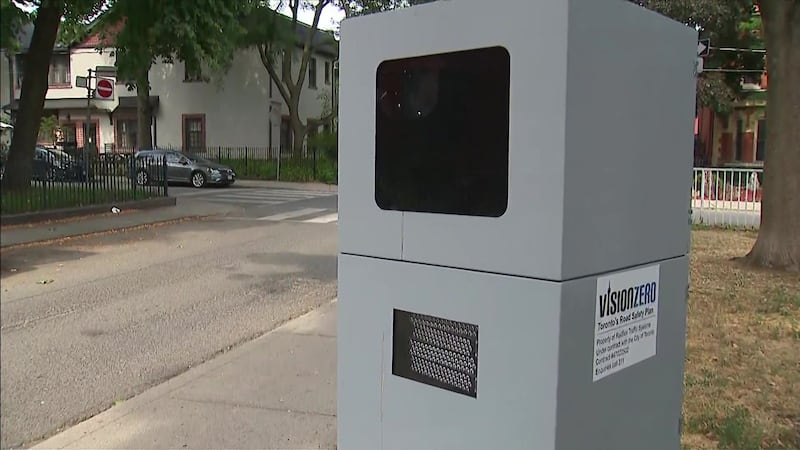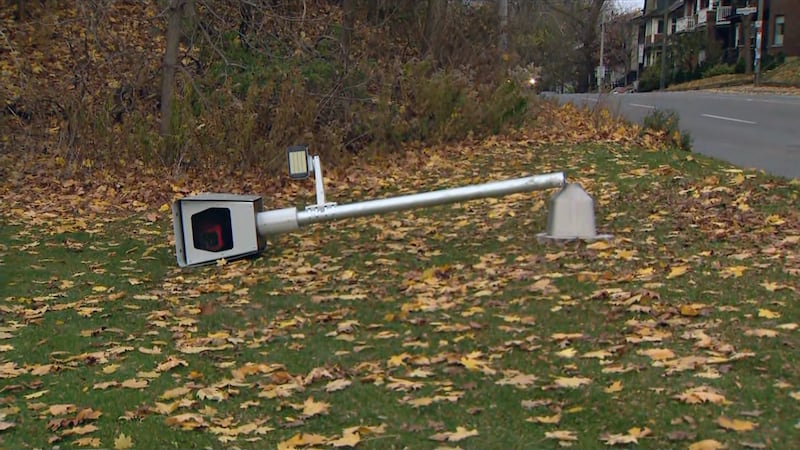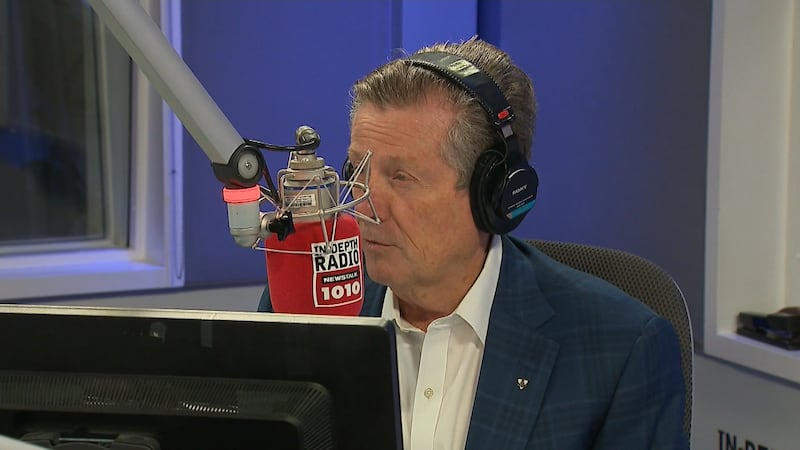Toronto City Councillor Anthony Perruzza says speed cameras are not changing the behaviour of drivers and wants to see more visible markings in school zones.
A Toronto city councillor is calling for a pause on the city’s Automated Speed Enforcement program, saying hidden cameras have become “speed traps” that fail to slow down traffic and unfairly penalize conscientious drivers.
Humber River–Black Creek Coun. Anthony Perruzza will ask council Thursday to temporarily halt issuing tickets from the city’s speed enforcement cameras while staff review the program.
The motion comes after Vaughan announced it would suspend its own camera enforcement program until at least September just months after it began issuing tickets. It said that the decision was made in response to rollout concerns from residents and an influx of calls related to people disputing tickets
In Toronto, where the number of speed cameras doubled to 150 earlier this year, the program has drawn repeated vandalism and generated roughly $40 million in fines last year.
“These cameras are becoming speed traps that have no meaningful impact on slowing down communities,” Perruzza told CP24 on Wednesday. “Often, drivers are unaware that this camera exists here, and responsible drivers are ticketed despite traveling at speeds close to the posted limits. I’m hearing from many residents that they feel unfairly penalized.”
Residents feeling ‘unfairly penalized,’ councillor says
Toronto’s speed enforcement program was launched in 2020 under former Mayor John Tory and has grown significantly in scope since then, with three times as many cameras.
As part of the program, cameras are rotated through Community Safety Zones and signage is posted to alert drivers to the presence of the cameras.
 Councillor Anthony Perruzza says speed cameras have become ‘speed traps’
Councillor Anthony Perruzza says speed cameras have become ‘speed traps’
A study conducted by researchers with the The Hospital for Sick Children and Toronto Metropolitan University in 2022 found that there has been an overall 45 per cent reduction in the proportion of drivers exceeding the speed limit in areas where the cameras are operational.
City officials have also pointed out that the program is intended to change driver behaviour over time and is not about generating revenue.
Perruzza, however, disputed whether it is accomplishing that goal.
“What we really want people to do is slow down, be more cognizant of their environment,” he told CP24. “You want to change behavior and the way the cameras are out there now; it’s not doing that.”
He argued that too many cameras operate with little warning or visibility.
It should be noted that under provincial legislation, signage warning drivers about the presence of cameras in a new location must go up 90 days before they can begin issuing tickets.
“We need to have visible markings. People need to know that this is a school zone, that there is a camera here, and that if you exceed the posted speed limit, you are going to get a fine. But it needs to be clear. It needs to be visible,” he said.
A call to halt program until September
Perruzza’s motion directs city staff to review the program’s implementation, including alternatives such as increased signage, improved pavement markings, and issuing warning notices before ticketing.
“The issuing of tickets should be immediately paused while City staff review the ASE program and report to council in September with a plan to ensure that the program meets its goal of improving safety, without unfairly targeting conscientious drivers,” the councillor said.
It’s also a program that has faced its share of challenges.
One notable location at Parkside drive, issued roughly 66,000 tickets and generated approximately $40 million in fines last year. But it’s been cut down numerous times in recent months, adding to the city’s ongoing fight against vandals.
 Parkside Drive speed camera A damaged Parkside Drive speed camera is pictured in Toronto on Saturday, Nov. 30, 2024. (CP24)
Parkside Drive speed camera A damaged Parkside Drive speed camera is pictured in Toronto on Saturday, Nov. 30, 2024. (CP24)
Already, the city has logged more than 325 vandalism incidents involving its ASE cameras in 2025.
While the councillor says that he supports the city’s long-running Vision Zero initiative amid the mounting frustration from some residents, he says there urgently needs to be a “better appeal process.”
“There needs to be a better appeal process, there has to be some clemency built into the program,” he added. “At 11 p.m. at night, there’s nobody around on a major arterial road, you get zapped by a hidden camera and I don’t think that’s what we intended.
John Tory defends the program
Former mayor John Tory, speaking on NewsTalk 1010 Thursday morning, defended the cameras’ role in making streets safer.
“I launched this program because of the incredible number of deaths and serious injuries that resulted from speeding,” he said.
 John Tory doesn’t have plans to run for Toronto mayor, but says he has ‘a lot to think about’ John Tory doesn’t have plans to run for Toronto mayor, but says he has ‘a lot to think about’
John Tory doesn’t have plans to run for Toronto mayor, but says he has ‘a lot to think about’ John Tory doesn’t have plans to run for Toronto mayor, but says he has ‘a lot to think about’
“I said at the time, and I would say it again today, I don’t care if those cameras take in one cent of revenue. The notion this is some kind of revenue grab is ridiculous, because the only thing that triggers a fine to be paid is if somebody speeds.”
Flexibility versus enforcement
Coun. Shelley Carroll, representing Don Valley North, said the program was never intended to be about making money.
“People talk about flexibility. Well, this isn’t meant to be a cash grab. It’s meant to change behavior, which means the amount of revenue from it should be going down every year as well, and we’d be happy to have it going down,” Carroll said.
“But if you want to add flexibility, if you want to add technology for every add to the program to make everyone perfectly happy, you’re adding a need for human resources to run the program.”
Since 2016, the city has gradually increased its investment in Vision Zero to support its road safety efforts. The 2025 council-approved budget of $99.1 million — $31.7 million in capital and $67.4 million in operating — marking the largest annual investment for the program since its launch.
